5 Nutrition Basics You Need to Know to Get Started
We have all heard about the risks associated with excess weight and obesity. A person with a high body fat percentage faces increase risks for health issues such as type 2 diabetes, high blood pressure, high cholesterol, infertility, and heart disease. Science seems to be pretty clear on this – so why do the options for reducing body fat and associated risks seem so confusing?
Paleo. Keto. Vegan. Whole 30. Low fat. Low carb. Juice cleanses. Detoxes. Intermittent fasting. It’s easy to see how someone could get overloaded and overwhelmed with conflicting information! Did you know that weight loss is an industry? It’s true – in 2017, the weight loss industry raked in over $68 billion dollars! And the biggest threat to the industry is a change in the way we think about our weight, health, and nutrition. Trendy meal plans and fad diets keep consumers confused about what to eat, how much to eat, and even when to eat and that confusion brings in big business! I know what you’re thinking. “Wait a minute, isn’t Live Lean Rx Houston in the weight loss business, too?” Well, sort of. We’re in the body composition business. We don’t care what you weigh, we care what you’re made of. You see, even with a healthy body weight, too much body fat leaves you at increased risk for obesity-related disease! Our business is to help you achieve your goals in a way that reduces your body fat but maintains (or even increases!) your hard-earned muscle.
What if you could ignore all the noise of the latest, most fashionable diets and focus on simple, personalized nutrition that fuels your body so you can reach your goals? That’s exactly what we do! We call it counting macros but you might hear people talk about flexible dieting or “if it fits your macros” (IIFYM) plans – it’s all the same. Just like you had to learn basic concepts about numbers before you could learn to add and subtract, you’ll need to understand some nutrition basics before you can count macros.
Here’s what you need to know.
- All food is made of a combination of carbohydrates, fats, and proteins – these are called macronutrients. If it doesn’t have one or more of these macronutrients (or “macros”), then it’s not food!
- Each macro serves different functions in your body and all three macros are critical to your body’s health and biological processes. You need a variety of carbs, fats, and proteins in your diet to maintain health!
- Calories are a measure of how much energy is in food, the same way a gigabyte measures how much information is in a computer drive. A gram of carbohydrate or protein has 4 calories while a gram of fat has 9 calories.
- Most of the calories you burn come from your Resting Metabolic Rate (RMR). Your RMR is the number of calories you burn if you rest for a full day. This accounts for 70-80% of all the calories you burn! The rest of your calories come from your lifestyle activities (like cooking dinner or walking to meetings) and your exercise activities. The sum of the calories you burn in one day is called your Total Daily Energy Expenditure (TDEE). In other words, your TDEE tells you how many calories your body needs. You can think of it as a math equation: RMR + Lifestyle Calories + Exercise Calories = TDEE. You can find TDEE calculators online but remember that your metabolism is unique to you. This means calculators may overestimate or underestimate your calorie needs and cause you to eat too little or too much to reach your goals. For the best results, we recommend you schedule an RMR Test so we can show you exactly how many calories your body needs.
- Fat loss is basically a simple math problem. When you consume more calories than your body uses in your TDEE, you create a calorie surplus. Your body stores the surplus calories as body fat tissue. When you consume fewer calories than you use in your TDEE, you create a calorie deficit. To address the deficit and find the calories needed to fuel all your needs, your body uses the energy stored in body fat tissue. In other words, you burn body fat!
Now that you know the basics, you’re ready to start creating your own personalized nutrition program to bring weight loss you can maintain! In our next blog post, we’ll talk about how to choose the right macro ratios based on your goals and body composition.





Recent Comments